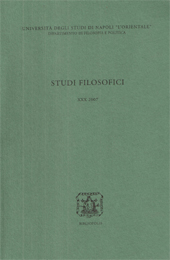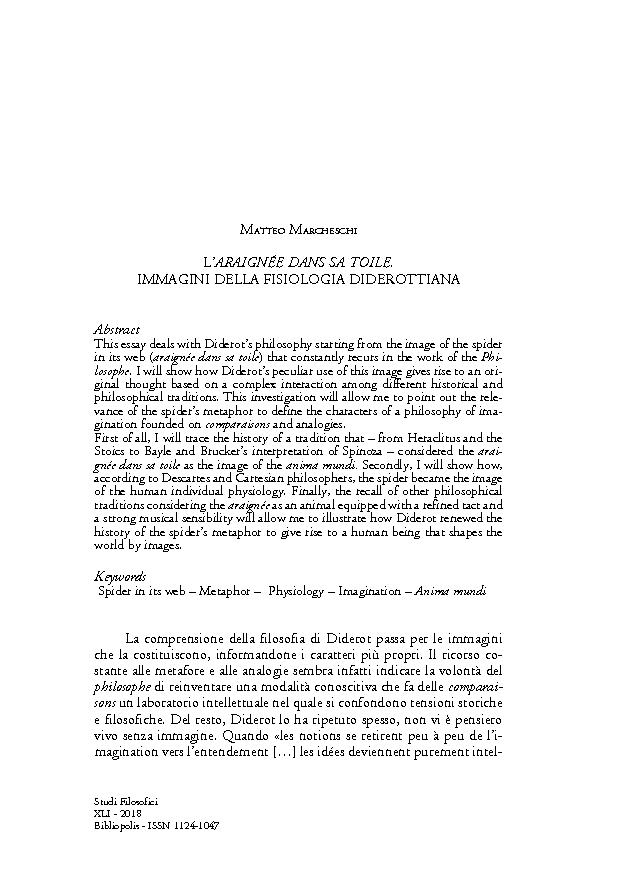L'araignée dans sa toile : immagini della fisiologia diderottiana
P. 71-93
This essay deals with Diderot's philosophy starting from the image of the spider in its web (araignée dans sa toile) that constantly recurs in the work of the Philosophe. I will show how Diderot's peculiar use of this image gives rise to an original thought based on a complex interaction among different historical and philosophical traditions. This investigation will allow me to point out the relevance of the spider's metaphor to define the characters of a philosophy of imagination founded on comparaisons and analogies.First of all, I will trace the history of a tradition that – from Heraclitus and the Stoics to Bayle and Brucker's interpretation of Spinoza – considered the araignée dans sa toile as the image of the anima mundi. Secondly, I will show how, according to Descartes and Cartesian philosophers, the spider became the image of the human individual physiology.
Finally, the recall of other philosophical traditions considering the araignée as an animal equipped with a refined tact and a strong musical sensibility will allow me to illustrate how Diderot renewed the history of the spider's metaphor to give rise to a human being that shapes the world by images.[Publisher's text]
-
Articles from the same issue (available individually)
-
Information
DOI: 10.1400/266974
ISSN: 2038-6613



